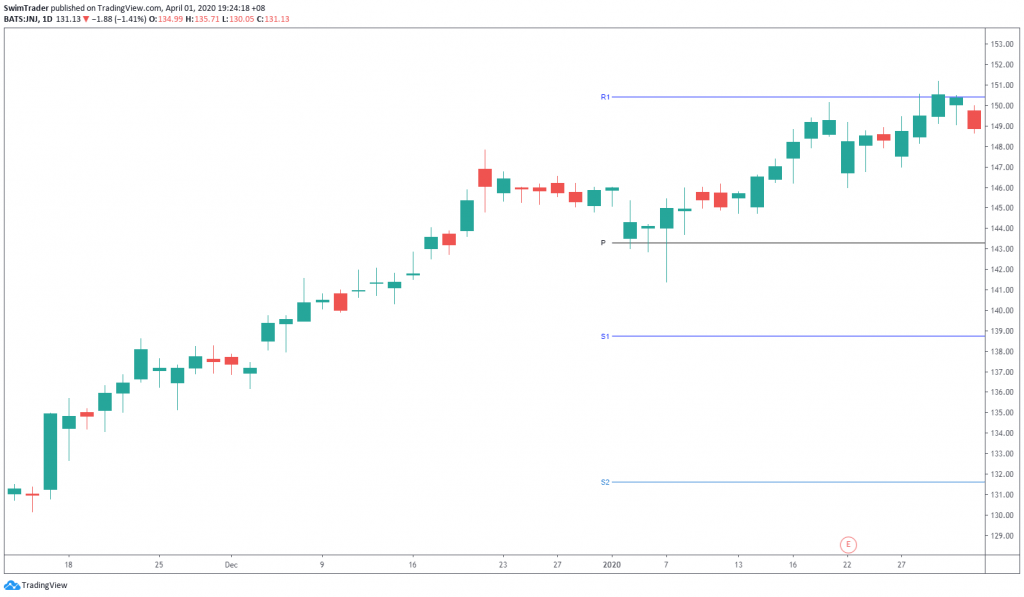You have shortlisted a stock. You have written down the entry price and set your stop loss level. You are left with the exit plan – where should you take your profit and close the trade?
Often, more focus is placed on the entries. The entry brings you into the action of trading. It is mesmerizing. To stay alive for more trading action, it is a must to focus on your exits. You want to take profit and know how to protect your trade.
Here are 5 useful tips to determine your exits like a pro!
#1 Support And Resistance
Unfamiliar about support and resistance? Don’t worry. It is in the next article.
An area labelled as resistance means that there exist sellers in that price area causing prices to stay within that zone. Never enter at a price that’s just below the resistance area because of this.
This means that you can use the first resistance area as your first exit target (for long positions). Monitor your trade closely. If your trade breaks out of the resistance zone, you can set the next resistance level as a point of exit.
In a short position, you can use the first support area as your first exit target. Likewise, monitor your trade closely and target the next support level as your exit price level.
Below is an example of entering on support and exiting on the resistance.

#2 Pivot Points
Monthly pivot points drawn on daily charts are reliable profit targets. Their usage is similar to support and resistance.
R1 is also a potential exit area. See how R1 and the resistance zone drawn are similar to each other.

#3 Price Magnitude
Prices move in waves. There are impulse and corrective waves. The impulse wave moves in the same direction as the primary trend while the corrective waves are short waves which goes against the primary trend.
Technical analysts believe that history tends to repeat itself. Based on this concept, you will need to assume that the price magnitude of the second wave will be more or less the same as that of the first wave up.
Knowing the price magnitude of the subsequent wave, you will have a clue on where to set your exit target (aka take profit). Notice how the duplicate of P1 points us to R2 pivot.

#4 Time Exits (Targets)
Review your trades to discover the usual time needed for your strategy to turn profitable. This is where your trading journal comes in handy.
If you discover that your trades generally take 30 days to hit your target price level, note it down. That’s the amount of time you should wait for your future trades to hit their respective target prices.
What happens if your trade has not hit your target price level at the end of 30 days? You can consider closing the trade. Think opportunity cost.
Another form of time exit follows the season. Say the stock that you own has proven to be a strong performer in the last few months of the year. By late December, you will want to review this stock and evaluate if you want to close it if it has not hit the intended target price level.
The example below shows the stock price increasing in the month of January. You can decide to exit end of the month or exit if it hits your target profit.

#5: Trailing Stops
You can employ a dynamic or manual trailing stop loss.
A dynamic stop loss will inch towards your target price as prices moves in your favor. It will not move when prices move against you.
A manual trailing stop loss is set by you by manually moving your stop loss as price moves in your favor.
Both types of trailing stop losses seek to minimize losses or lock in a portion of your profits, while not missing out on the action.
If you were trailing your stops, you would have locked in a profit after prices hit R3 (yellow rectangle) and came back down.

Conclusion
Knowing the above has helped me in setting realistic exit targets. Couple this with the ability to understand price action, you will improve your profitability.
Here’s What You Can Do To Improve Your Trading Right Now:
#1 Join us in our Facebook Group and share your questions as we learn and grow.
#2 Never miss another market update; get it delivered to you via Telegram.
#3 Grab a front row seat and discover how you can expand your trading arsenal in our FREE courses (for a limited time only).
See you around!

